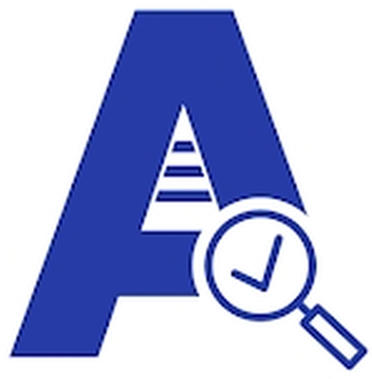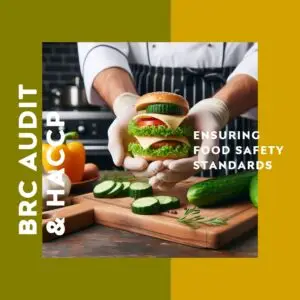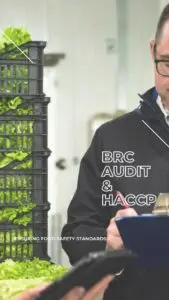BRC Audit Clause 6 Checklist
BRC Audit Clause 6 Checklist – Global Standard for Food Safety can help ensure that all requirements related to hazard and risk management are properly addressed during the audit process.
Here’s BRC Audit Clause 6 Checklist:
Hazard Analysis (6.1)
- Have all potential biological, chemical, and physical hazards been identified at each stage of the food production process?
- Is the hazard analysis conducted based on scientific knowledge, historical data, industry best practices, and regulatory requirements?
- Are hazards associated with raw materials, ingredients, processing methods, equipment, facilities, and personnel practices considered?
Risk Assessment (6.2)
- Have risks associated with identified hazards been evaluated, considering factors such as likelihood of occurrence, severity of consequences, and effectiveness of existing controls?
- Are hazards prioritized based on their significance to food safety and the potential impact on consumers, product quality, and regulatory compliance?
- Are appropriate risk mitigation measures and control strategies developed to manage identified risks effectively?
Risk Management (6.3)
- Are preventive controls, such as Good Manufacturing Practices (GMPs), Standard Operating Procedures (SOPs), and sanitation practices, implemented to prevent, eliminate, or reduce hazards to acceptable levels?
- Have Critical Control Points (CCPs), Critical Limits (CLs), and monitoring procedures been established for controlling identified hazards?
- Is system in place for implementing corrective actions, verification activities, and validation studies to ensure the effectiveness of control measures?
Documentation and Records (6.4)
- Are documented procedures in place for hazard analysis, risk assessment, risk management, and control measures?
- Is record maintained for hazard analysis, risk assessment results, identification of hazards, assessment of risks, and justification for control measures?
- Are records kept for preventive controls, monitoring activities, corrective actions, verification results, and validation studies conducted to ensure compliance with BRC requirements?
Continuous Improvement (6.5)
- Is there a system for continuous improvement of hazard and risk management processes, including regular review and updating of hazard analysis and risk assessment?
- Are emerging food safety hazards, technological advancements, regulatory changes, and industry trends monitored to proactively identify and address new risks?
- Are internal audits, management reviews, and performance evaluations conducted to assess the effectiveness of hazard and risk management systems and drive ongoing improvement efforts?
By using BRC Audit Clause 6 Checklist, auditors can systematically evaluate compliance with Clause 6 of the BRC Global Standard for Food Safety
BRC Audit Clause 6 Checklist ensures that hazard and risk management processes are effectively implemented within the food production facility.
eAuditor Audits & Inspections assists with the inspection of Clause 6 of the BRC Global Standard for Food Safety and can streamline the process to improve efficiency:
Checklist Creation
- eAuditor Audits & Inspections provides a digital checklist based on the requirements of Clause 6, including sections for hazard analysis, risk assessment, risk management, documentation, and continuous improvement.
It allows users to customize the checklist based on specific audit requirements or industry sector.
- eAuditor Audits & Inspections provides a digital checklist based on the requirements of Clause 6, including sections for hazard analysis, risk assessment, risk management, documentation, and continuous improvement.
Data Input
- eAuditor Audits & Inspections enables auditors to input inspection data directly into the app, including responses to checklist items, observations, comments, and photo documentation.
It provides options for attaching documents, records, and evidence related to hazard analysis, risk assessment, and risk management.
- eAuditor Audits & Inspections enables auditors to input inspection data directly into the app, including responses to checklist items, observations, comments, and photo documentation.
GPS Integration
- eAuditor Audits & Inspections can incorporate GPS functionality to tag the location of inspections, providing a geospatial context for audit findings and observations.
Notification and Alerts
- eAuditor Audits & Inspections sends notifications and alerts to auditors for upcoming inspections and overdue tasks .
Reporting and Documentation
- eAuditor Audits & Inspections generates comprehensive inspection reports summarizing audit findings and observations.
- It allows users to export reports in various formats (e.g., PDF) for sharing with stakeholders, or customers.
Corrective Actions and Follow-Up
- eAuditor Audits & Inspectionscan track corrective actions resulting from audit findings, including assignment of responsibilities, due dates, and status updates.
Security and Compliance
- eAuditor Audits & Inspections has implemented robust security measures to protect sensitive audit data.
It ensures compliance with data privacy regulations and complies with industry standards and certification requirements for audit management systems.
- eAuditor Audits & Inspections has implemented robust security measures to protect sensitive audit data.
User Training and Support
- eAuditor Audits & Inspections provides user training and support resources within the app to help auditors understand how to use the app effectively.
It offers access to help documentation, tutorials, and FAQs to address common issues or questions.
- eAuditor Audits & Inspections provides user training and support resources within the app to help auditors understand how to use the app effectively.


